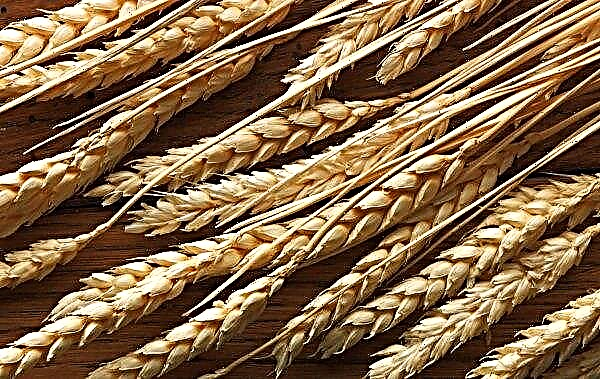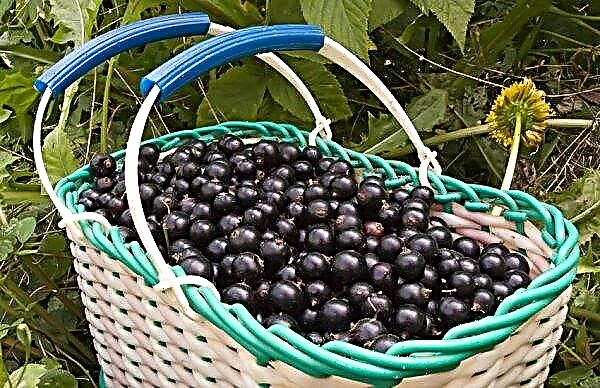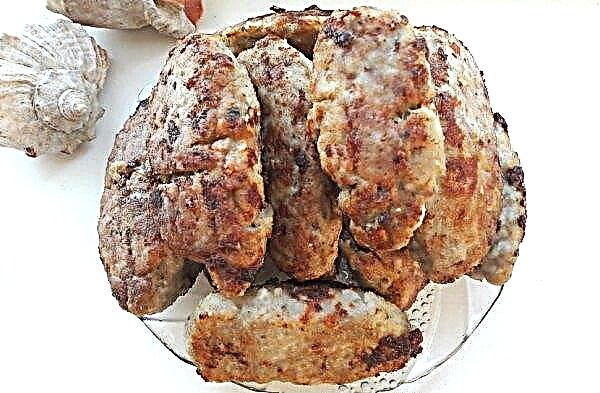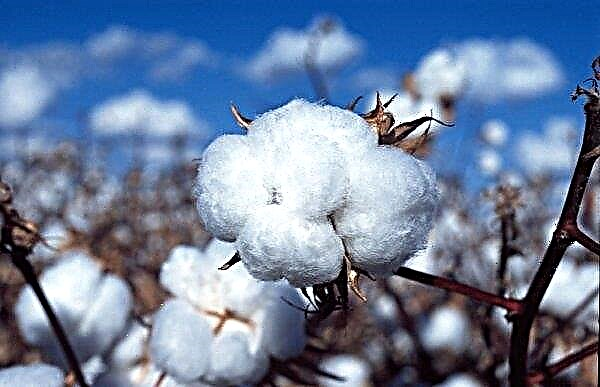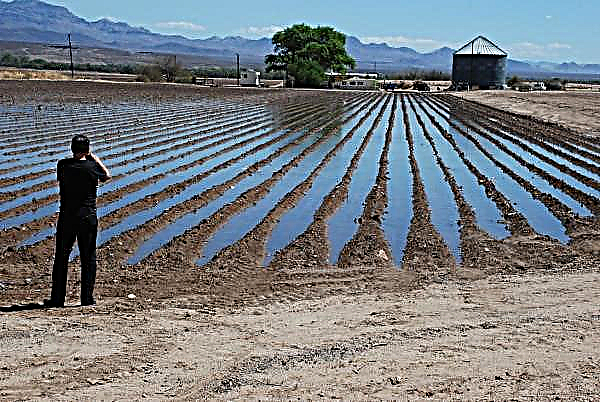Savoy cabbage was bred from Italy at the end of the 13th century and gained great popularity in Europe in the 19th century. With proper care, its cultivation is not difficult. The recommendations from this article will help you grow this unusual cabbage in your own garden without any extra problems.
Characteristics of Savoy Cabbage
Savoy cabbage is a two-year cross-pollinating plant, a type of cabbage cabbage. Heads of cabbage are large, but friable, leaves are thin, corrugated. Unusual color of greenish-yellow, light green shades.
The rich composition of the vegetable makes it very useful. Among the advantages, one can single out the ability to restrain the increase in blood pressure, the diuretic effect, the strengthening of immunity and stabilization of the nervous system, and protection against the effects of carcinogens. However, in the presence of gastritis, ulcers and thyroid diseases, the vegetable is contraindicated. By maturity, varieties are divided into early, middle and late.

Early grades
Among the popular early varieties (105-120 days), it is worth highlighting the following:
- Anniversary 2170;
- Moscow lace-maker;
- Vienna early 1346;
- Julius F1.
Mid-season
Of the medium varieties (120–135 days) of this cabbage recommended for cultivation:
- Melissa F1;
- Sphere
Later
Among late varieties (140 days or more), the following are common:
- Veros F1;
- Ovas F1;
- Pie
- Vertu 1340;
- Morama F1.
Growing and caring for Savoy cabbage in the open ground
The following recommendations will help grow Savoy cabbage on an open bed so that your efforts justify themselves.

Preparation of soil for seedlings
Seeds are planted in early March. For planting seeds, it is necessary to prepare special soil. In wooden boxes in equal proportions mix turf land with sand and peat. Shed the prepared soil with a weak solution of manganese.
Important! It is not recommended to use garden soil to grow cabbage. It may contain infections that can damage crops.
Preparing seeds for growing
Pour them with hot water for 20 minutes (not lower than + 60 ° С), then lower it into very cold water for 3 minutes, and then soak the seeds for 14 hours in a trace element solution. After soaking, the seeds are placed in the refrigerator for a period of 22 to 24 hours. This will increase frost resistance and seed germination will persist for 5 years.
Seed sowing technology
Seeds are sown at a distance of 1 cm. The row-spacing is at least 3 cm, the depth of the grooves is 1 cm. The grooves are covered with earth. The drawers are covered with a film or glass on top.
Seedling Care
With proper care and the creation of favorable conditions, you can significantly increase the yield of the presented culture.

Optimal conditions
It is necessary to maintain the room temperature not lower than + 18 ° С. Before the first shoots appear, the soil should be well watered. After the emergence of shoots, open the drawers and lower the temperature in the room to + 15 ° C during the day and + 8 ° C at night.
On the 7th day, thinning should be performed so that the distance between the sprouts is 2 cm. For the seedlings to grow strong, it needs a large amount of light. In the light of seedlings should be at least 14 hours. For this, you can use an ultraviolet lamp.
Feeding seedlings
Make the first dressing at the moment when two leaves appear on the seedlings. Prepare the solution by mixing 1 liter of water with 0.5 tsp. complex fertilizer. Spray leaflets with this solution. After two weeks, repeat the procedure.
Important! Before top dressing, the soil should be moistened beforehand to prevent burns.
Watering
Watering should be carried out daily with a small amount of water so that the soil is always moist. Water should be slightly warm. After watering, you need to loosen the earth so that there is no stagnation of water. After 2 weeks, seedlings should be dived. Shorten by 1/3 of the roots and transplanted into peat cups.
Disease and Pest Prevention
Prevention consists in observing simple rules:
- Regular inspection of leaves for pests, holes or spots.
- Constant but infrequent watering. Drought leads to the accumulation of nitrates in the cabbage, and excess water leads to fungi and rot of the roots.
- Conducting timely top-dressing of the soil.
- Planting cabbage in the same place no more than once every 4 years.
Planting seedlings in open ground
To get a rich harvest of large heads of cabbage, check out tips for planting seedlings in open ground.

Departure Dates
The date of transplantation into open ground depends on when the air temperature daily reaches + 15 ° C. More often the weather stabilizes by mid-May. Seedlings by this time should be 15-30 cm tall (depending on the variety of early maturity) and have strong leaves. A pick is best done on a cloudy morning or evening.
Neighborhood with other cultures
Desirable precursors and neighbors for Savoy cabbage are onions, cucumbers, carrots, pumpkins, potatoes, and legumes. Beets and tomatoes are also not suitable - they noticeably deplete the soil, absorbing a lot of potassium and phosphorus. Because Savoy cabbage is often hit by keel. You can return to the garden where cabbage crops, rutabaga, radishes, daikon, turnips, turnips, and crops can be returned no earlier than 4 years later.
Did you know? In New Jersey, USA, there is a law that prohibits the sale of Savoy cabbage on Sundays.
Care for Savoy cabbage in the garden
The first irrigation is carried out immediately after planting, the second - after a few days. In the future, water the culture 1 time in 7-8 days. Gradually increase the amount of liquid poured under the cabbage according to the size of the heads of cabbage. Pour water strictly under the root. Choose the best time of day for this procedure - early morning or late evening.

Fertilizing is important for good cabbage growth, otherwise you will run into trouble when a head of cabbage is not tied. You can use mullein, urea, azofoska, superphosphate, potassium salt. Fertilizers are first introduced into the phase of active growth of young plants, then - during the formation of heads of cabbage.
Consider the common diseases of Savoy cabbage and find out what to do in each case:
- blackleg - water the soil with the “Fundazol” solution;
- fungal ailments - treat plantings with copper sulfate;
- black spotting, mosaic - spill the soil with a solution of potassium permanganate, and remove the affected heads of cabbage;
- powdery mildew - treat the infected cabbage with ash or Fitosporin solution with an interval of one week;
- keel - cabbage must be disposed of.
Did you know? In Italy, Savoy cabbage was dedicated to the holiday, which is held every year. This celebration was called "sagra."
The following are common pests and methods for controlling them:
- cabbage fly - Sprinkle the row spacing of the beds with ash or tobacco dust;
- slugs - cover the heads with nettle or wormwood;
- cruciferous flea - you will need to spray the beds with a decoction of wormwood or a solution of “Bitoxibacillin”.
Harvesting and storage
Proceed to head out in dry weather. To cut the heads, use a clean, sharp knife. Early varieties are ready to be harvested in June - early July, and later ones in October. The average crop yield is 12–28 kg per 10 square meters. m. Early cabbage is not suitable for long-term storage, so it must be used in food almost immediately.

Regarding the late species, with their proper storage, they do not lose their freshness and useful properties for 6 months. After harvesting, it is recommended to cover the cabbage with ground chalk and leave it for two days in a dry room. Then transfer the crop from the garden to a room with a humidity of 90–95% and a temperature of 0 to + 3 ° C.
The cultivation of Savoy cabbage can not be called a complex and time-consuming process. Due to its resistance to cold temperatures, cabbage can be grown in regions with short summers and cold autumn. Savoy cabbage is superior to many cabbage species in terms of taste and vitamin composition.

